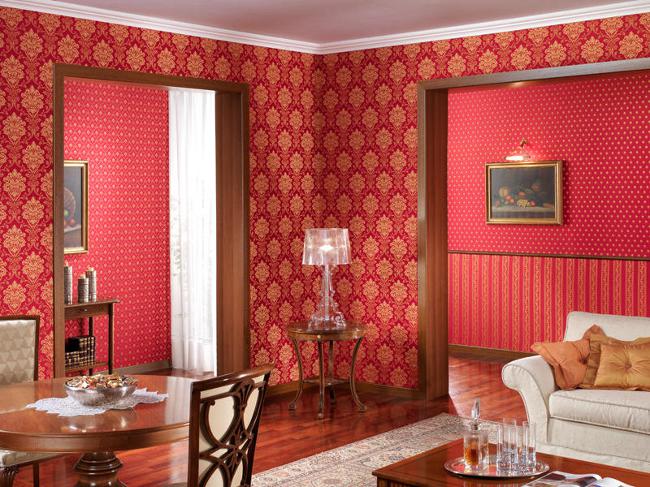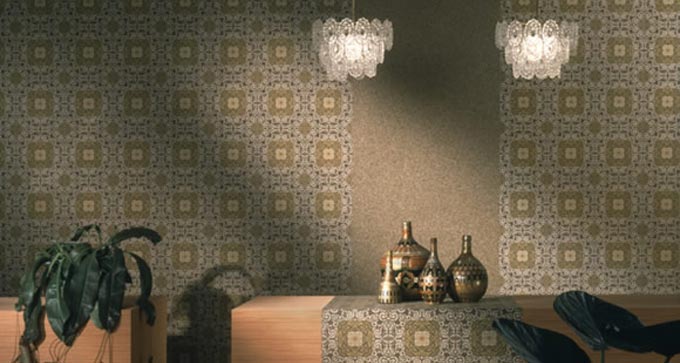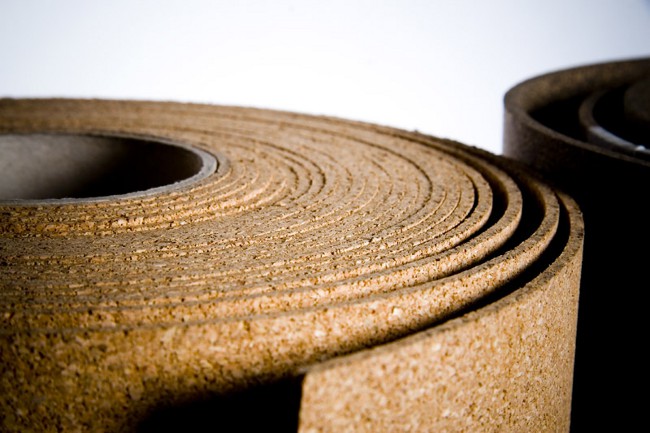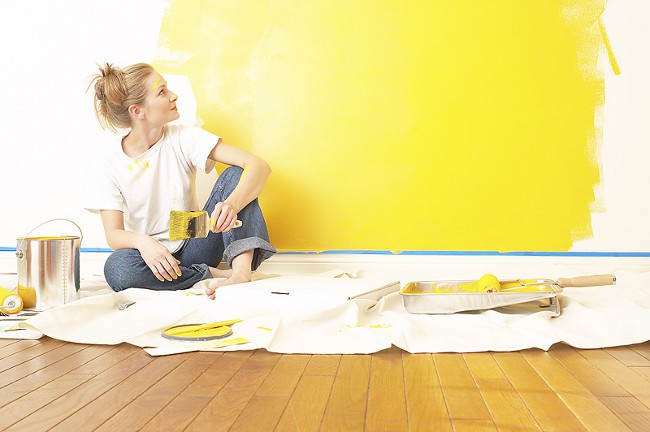Textile wallpaper
 Textile wallpaper - this is an option for those who like the refined,luxurious and exclusive interior, emphasizing the high status of the owner of the house. Walled with such wallpaper the walls look as if they are upholstered by a single piece of cloth.
Textile wallpaper - this is an option for those who like the refined,luxurious and exclusive interior, emphasizing the high status of the owner of the house. Walled with such wallpaper the walls look as if they are upholstered by a single piece of cloth.Typically, textile wallpaper consist of two layers - basic and facial. The base is usually made of paper or non-woven. This layer makes it easier to glue the wallpaper and helps them to keep the shape, not letting the fabric stretch or warp. The front (top layer) is made of textiles. For the top layer, both natural (cotton, linen, jute) and synthetic (polyester, polypropylene, microfiber, acrylic) fabrics are used. The face layer can consist of glued threads or of a single web.
Textile wallpaper - the pleasure is not cheap. The final price of such wallpaper depends on many factors: the material of the textile layer (including its environmental friendliness and naturalness), the texture of the wallpaper, the way of painting, the resistance to environmental influences.
All textile wallpaper are divided into several basic varieties:
Synthetic wallpaper. Due to the fact that the canvas is glued to the foam base, they are characterized by good heat and sound insulation. They are easy to care for (synthetic wallpaper can be vacuumed).
Linen wallpaper. They consist of a paper base and linen threads or composite materials. They look good and are pleasant to the touch, do not burn out under the sun's rays, but carry only dry cleaning.
Silk wallpapers. As the top layer is used not natural silk, but viscose with silk threads. Attractively look, usually produced by individual order.
Jute wallpapers. As the upper layer, jutefibers. Jute fabric is quite rough, with a pronounced texture, it allows you to mask the small irregularities of the wall. Such wallpapers almost do not burn out, they well tolerate dry cleaning. You can buy colored jute wallpaper or wallpaper for painting.
Felt Wallpaper. The top layer can be made from naturalfelt or synthetic analogues thereof. These wallpapers look attractive, provide good heat and sound insulation. Transfer wet cleaning, but only neat, using non-aggressive detergents. But gluing them is not easy.
Velor wallpapers. They consist of a paper base and nap from nylon,are manufactured using a complex specific technology. Very richly look, but strongly accumulate dust (even stronger than other types of textile wallpaper).
Of course, the main advantage of textile wallpaper is aesthetic appeal. The variety of materials and textures is practicallydoes not limit the interior designer. Textile wallpaper always looks exclusive and expensive. Due to the fact that the seams when gluing these wallpapers are almost invisible, it seems that the walls are covered with a continuous layer of tissue. Also, textile wallpaper has sound and heat insulation properties. They are eco-friendly and allow the walls to "breathe".
But there are textiles and their shortcomings. The first is relative high price. The second - low resistance to moisture and pollution. Textiles are much stronger than other materials,absorbs odors and accumulates dust on the surface. Therefore, textile wallpaper should not be glued in a children's room, kitchen, kitchen or room, where many smoke. For them, a bedroom, an office or a living room is more suitable.
Textile wallpaper you need clean regularly from dust accumulated on their surface. Most types of wallpaper well tolerate non-aggressive dry cleaning. It is very important to make sure that there are no stains on the textile wallpaper. If the stains are small and fresh, you can try to save the wallpaper with a soap solution. But if the pollution is large, strong and old, the problem area will have to be re-glued.
Sticky textile wallpaper it is better to entrust specialists - without properexperience to stick them on their own is very difficult. If the glue accidentally falls on the front side of the wallpaper, the canvas will be hopelessly spoiled. In addition, you may not get to correctly combine the joints of the canvas.
Textile wallpaper will help make your interior truly stylish and extraordinary - if only you are willing to accept the fact that for the luxury you need to pay.














